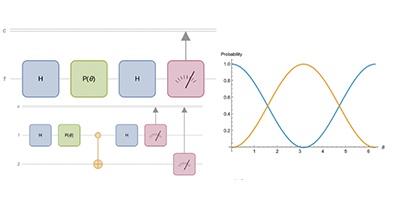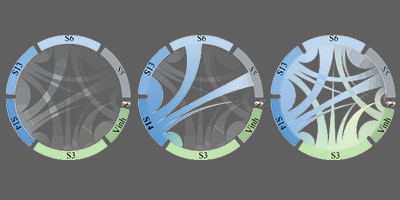Exploring a Boxing Legend’s Career with the Wolfram Language: Ali at 75
Muhammad Ali (born Cassius Marcellus Clay Jr.; January 17, 1942–June 3, 2016) is considered one of the greatest heavyweight boxers in history, with a record of 56 wins and 5 losses. He remains the only three-time lineal heavyweight champion, so there’s no doubt why he is nicknamed “The Greatest.”
I used the Wolfram Language to create several visualizations to celebrate his work and gain some new insights into his life. Last June, I wrote a Wolfram Community post about Ali’s career. On what would have been The Greatest’s 75th birthday, I wanted to take a minute to explore the larger context of Ali’s career, from late-career boxing stats to poetry.
First, I created a PieChart showing Ali’s record:
![bouts = <|"TKO" -> 21, "KO" -> 11, "UD" -> 18, "RTD" -> 5, "SD" -> 1, "LUD" -> 2, "LSD" -> 2, "LRTD" -> 1|>; PieChart[bouts, ChartStyle -> 24, ChartLabels -> Placed[{Map[Style[#, Bold, FontSize -> 14] &, Values[bouts]], Map[Style[#, FontFamily -> "Helvetica Neue", Bold, FontSize -> 16] &, Keys[bouts]]}, {"RadialCenter", "RadialCallout"}], PlotRange -> All, SectorOrigin -> {Automatic, 1}, ChartLegends -> {"Technical Knockout", "Knockout", "Unanimous Decision", "Retired", "Split-Decision", "Lost - Unanimous Decision", "Lost - Split-Decision", "Lost - Retired"}, PlotLabel -> Style["Ali's Record", Bold, FontFamily -> "Helvetica Neue", FontSize -> 22], ImageSize -> 410] bouts = <|"TKO" -> 21, "KO" -> 11, "UD" -> 18, "RTD" -> 5, "SD" -> 1, "LUD" -> 2, "LSD" -> 2, "LRTD" -> 1|>; PieChart[bouts, ChartStyle -> 24, ChartLabels -> Placed[{Map[Style[#, Bold, FontSize -> 14] &, Values[bouts]], Map[Style[#, FontFamily -> "Helvetica Neue", Bold, FontSize -> 16] &, Keys[bouts]]}, {"RadialCenter", "RadialCallout"}], PlotRange -> All, SectorOrigin -> {Automatic, 1}, ChartLegends -> {"Technical Knockout", "Knockout", "Unanimous Decision", "Retired", "Split-Decision", "Lost - Unanimous Decision", "Lost - Split-Decision", "Lost - Retired"}, PlotLabel -> Style["Ali's Record", Bold, FontFamily -> "Helvetica Neue", FontSize -> 22], ImageSize -> 410]](https://content.wolfram.com/sites/39/2017/01/1-In-Ali.png)

Ali was dangerous outside the ring as well as inside it, at least for the white establishment in the US. He converted to Islam and changed his name from Cassius Clay, which he called his “slave name,” to Muhammad Ali. Later he refused military service during the Vietnam War, citing his religious beliefs. For this, he was arrested on charges of evading the draft, and he was pulled out of the ring for four years. All this made Ali an icon of racial pride for African Americans and the counterculture generation during the 1960s Civil Rights Movement.
Perhaps a lesser-known fact about Ali is that he played an important role in the emergence of rap, and he was an influential figure in the world of hip-hop music. He earned two Grammy nominations and he wrote several poems, among which is the shortest poem in the English language:
“Me?
Whee!”
So let’s create a WordCloud of his most popular poems. First, I need to import his poems from a database site like Poetry Soup and do some string processing from the HTML file in order to get the poems as plain strings:
![poemsHTML = Import["http://www.poetrysoup.com/famous/poems/best/muhammad_ali", "Source"]; poems = StringReplace[ StringCases[poemsHTML, Shortest["<pre>" ~~ x__ ~~ "</pre>"] -> x], {"\n" -> " ", Shortest["<" ~~ __ ~~ ">"] -> " "}]; poemsHTML = Import["http://www.poetrysoup.com/famous/poems/best/muhammad_ali", "Source"]; poems = StringReplace[ StringCases[poemsHTML, Shortest["<pre>" ~~ x__ ~~ "</pre>"] -> x], {"\n" -> " ", Shortest["<" ~~ __ ~~ ">"] -> " "}];](https://content.wolfram.com/sites/39/2017/01/3-In-Ali.png)
Here are the first three poems:
![Take[poems, 3] Take[poems, 3]](https://content.wolfram.com/sites/39/2017/01/5-In-Out-Ali.png)
Then I get a list of the important words with TextWords and delete the stopwords with DeleteStopwords. Next, I style the word cloud with a boxing glove shape:
![WordCloud[ StringDelete[ DeleteStopwords@Flatten[TextWords@poems], {"\[CloseCurlyQuote]", "ve"}], \!\(\* GraphicsBox[ TagBox[RasterBox[CompressedData[" 1:eJztnb1rXMsZxk2SIo0gqFMlotKlGqcyBFVBnUNKF/cqyiVgfEE3IALq1KpW q8KdQZ1Lgf8AV24NKoLBnUCNGjcbP5u7aL3ZPfPOnJl5P87zwO/6WtjrPefM nJl5P//4488v/vGbJ0+e/PL7b/958cPpn09Ofvj3X//w7Td/e/3LP396ffz3 v7z+1/FPxyd/+vG33374n1/53ZO5ZoQQQgghhBBCCCGEEEIIIYQQQgghhBBC CCGEEEIIIYQQQgghhBBCCCGEEEIIIYQQQgghhBBCCCHrOD4+nr1582b28ePH 2ZcvX2bLuru7m//8+vp6dnJyMtvZ2VH/voRE4OzsbD63SvTp06fZ+fm5+jUQ 4o3Dw8PZ+/fvi+bdJl1dXc22trbUr40Qy2CveXt7W3Xurery8lL9OgmxBube 58+fm869ZeHs+OLFC/XrJkSb58+fz89sWnr79q36PSBEC9gvLQjr7+7urvr9 GOLg4GD28uXLub0XNibsp2EfBniP4Pf4+atXr+br+9OnT9W/M7ELxtLDw4P2 1Ps/4Xtp3xvMn4uLi9nNzc18f/D169dR14Sz9bt37+a2ZevvGdIHjAfLwljt eT+wbmE/0OssjH8Haybn4/R49uzZ3A7iQfBhtLwPmAOaZ+CFPnz4MPcBaY8N 0h6cYTzp/v6+6nlqf39/Pq9X43qsCPEPeDdojxPSBit2F4lw9qoZU4PP6ulv GSvaiOOBvY4XwQZSI4YG9kt8llfhvIB1W3vskPFY3XetqpavHvttC2e8Wjo6 OlIfQ6SM7e3t+XnKg+BbG3u92G96sTXlCjZb7fFE8oAdw6Lfb1WYM2PtgfDh ebjWseJ66AfMv7H+5B6Cf3LMdcJ/OIW5tyyeD+2D/af1cYn3w5g4GMSUeznj 1hauW3uMkWGsn//g/yq9NvjNSvOHI4n5XnaxvjaMiXmBv4x6FGuD2MPy+oC9 Z6nPAfZAD2fb3kK8hfaYI49Yjr1GbErJOxs+ek9xBRrSHnfkf8AnZlWIUSm5 Jtg7qbRYH0sf+NWsqtRuYHlPbU1j7FukDlZ9ECW+ZPgbeO7Ll/YYnDIWz0p4 J6AmTe61WD7PWhdrYemA2CxrQswZ4gNyrmNvb8+8P8W66CvsD2KVrAk5CrnX AZ8DNV6ldi9SjrU81BK7AHIkqDoqef+RcrDvsCTUv8+9Bto964rxo/1ALoQl 5eY84PtHze3TlvbYnAqW1o/cOCnY7qh20h6bU8CS/SI3350xL+2lPT6ngJV8 pNxaX9bOr1GlPT6jY2Uc557/6HfvJ+0xGh0Lyp1/tfuFUpsFO5f2GI2MhbzV XP+DxRi6yEIfGe1xGhXkz2kr1/9uyXY7FeGdl3ouyK8BqHnM/jJytOvS575f I9XU9aSUnQwx9JuEfSyeG+LdYHdAvgt7JT6iqdwzBtc/PSF+f+jZoH5drvD8 MS97956zBGofaQl+kJzaE1z/dJWqj1wjxwZ7InwO8ly050YvNHNzc86AXP/0 leqNU9tHhGceve7+6elp1XtWIuRmpL4n7Z/6kjynVvsU7Jei5i5i3bcg3ONN ddU9+d8j18eQ+G1bC/c30lxEHWlrWq2V4Cn3bxHbGjVXHz3erIwnvLOxh9Oe Q2Ox4JNfp8W9tVxHcVWr59qIsTup8aRR8wR7X8+9vK3WSYM87T9xH9fdXyux tzUkyZ/XfO943J+W+HGo9UI8yKb7jL11hDOiZIxrv9NhM/IUl+NpnbGslM8a wP9prS5PrlL7PbyHrMhL71Ltd1YESWInF3iuqyHxSWjGeayT9b2p5Zr1XrTp DLgO77EFkvFscZ0vqQHWC0/2fquS1puOcK9TsYTW6n8ty2qPDMZcjpO0xg3O Jd4l2W9bt/9arIlKlUtyNgIW8jFrSBKraXEfuipL8zDCu1lT0nw3KzGAY4RY lNR1WrKHpmRlX2rNfuVJUltblHssuV5vPi4L/TKYf1AmaZ5/JJuz5Ho9Sttv Qb9gmaQxiVZqs46VJEfCUzzvqtADVmP+IY6Hyhf2lpL7i31OFElivjzYYoaU U7+hFuzDkC9prRu8V6NIcmaKMJY06jSyF0O+ENsuubeR9vibcqmX8R77s5B0 j1OLKPa6XpLGg0bag0rWwKH6hR7VM//Qmx1ZW5IzUbQcMMkZKVp+sjTuogb0 S8gl3aNEsYNCkj5X2KdGlCQHrQaME5UJObeS+xltby+55mhr4LJ6zEHvtuRe gt8rdS8t5wqUSLIOWKwBVlO5/Z5LiFrvq6YkMZIg0r5+ite8Sa1rYXAOpiXp eRDNDiOp/RApBm9IreNJOQeHJfXHR9rTS/0vU7IlbG9vN5uDkcZOC0nWwGhx DhJfBHIIpyRpjnYJU3qX5UpaHyZSPIw0fyCS/0UiqV28hBY+enxf2BG9z2/J ePScJ7AqnEskYyaa/0WqVr0QW9QiX65dBZsSxrLHHPKprQdDdYkXoP/fVNUq nrtF3YFN7wv4kjAfPYxbiS3MQo+4WpKed6bgixhSqzjS2rVmU/VVPDxHyZrg uUbvsqS236nZYdapVU5FzXqXEt+u9V4LknNRJH9gqpf1gki2p1JJz8y51Myl T9WL81BzS2KL8bCWSyR9rzO/5lHSOnq51LrHqZojHuyIqXzVKPU/pPk5EfLj a6plPkWNPWJqDbH+PpXYvqLY5qXvcw82tJ5qWZO0Rv2TVG9k6/UOJHuzCLYY qa8LeQPU92rprwdj7TOp+nDWz/WoyTD0/T2cZ1OS9h7iHnSzJHbzMYyphZKy sVm2iUpi07z3TJL6ITy8LzXVoyZw6Twc8mFar3kgyRfwHuOeWucXRM6Nr6Fe fQxL+lcN5XhY38el3m24Ns+S1AIAkeJ/WqmVn3Ad8EXn7B+H8l6s53ym6obC 3uRV0jxUPD9Kpl5zMHdv4nkOpvI0vdoIc97Z3vfaPdWzBukC2MlSz2io9oZl O5vE3uw1F0taDwV1DCm5Un64liB2d9NcHDrzW14HJb55yzbdTZLW5Y/UG6OX etUfTa2Lq3GT+NmmP2/ZJpOyiXq0x0jHyJRzAseoR91DKRifeN5YG4d6lVv2 TaRszZbfH+uUMz54BixTL/9Ebazu51Kx5pbPsqvKGRuRetP0lpVe9rlYjb2I MgdzxoWHHBbL6tkXpiZWY7YjzMGc+WfZPuZF0lrk1rCau5SyyVgfs9K6vGBr a8vsmcCTvM5Bq/uf1Bpi2XaYWsNXYW31OvI6B6326fFaByc3ft9rnIFFeZ2D Vsey5HxtrYZMKlfT+vf3Ls9z0GJejCSv3Mo+Gu8L7I1z7jl9EPXleQ5a65GS U5tAWyW9Rzj/2ignH9oilpQTU1KSU1lDsKNI64AuY3HPEUXe56AlP2FubZDe dsXSugmW7nFEpWrpWsdKnH7JuwxnsR52pVyfwwL4/xgD2l45PlmrWIhbK+0f gNqcrWocYm+ca3NZAN+Phfs6BbXukd0DC7Vyx+ZC18qtR/6itN7LJqzZuqIL Oc/ac6gGmqpVlwdrIp5Hbj1qnNeQ81WjfwFtn/3VqidobzTrJ7ToMY46AqhL hs/GGom5gXMd/h+2FeRXSusLSoCtlLXodZQbI2EV2A+0NJTzD4bqU1nAa42p KCo9s1tEq3Z16nvB7mVxv4FaQrS76Et7HNSmdwypxK68GOdjbSW1wL4TthtK X17zd4fobdNLzavVfEHN+j2IIaC/3Za81pJJ0TOvJmUXWbc/hj8wdYasCfac XPdsqkfPFw1go++hsfV8sY9t1fsKnwtbMc97ttXzXdybHjHRkrOgRFij4N8b Yx+D7RX+Cvgv6GPwI9jztedKS1rvSVPxaahNnSvsU+ELxDsE/kGcJ1FPFXMM v2Lvi8/FORT/Ps4TnHM+FdEes0rrmtZDdYiBhRg6yq5KY+m9cXR01Owepnzv rPlADUmz10tvWqxHEntMq3wIKoa050Vvaq9Jqf5KHnu7UP3kPW+3lJp566mc Lw/1tCk9tYjz9wDOb7Vi2VL30ErtNMqmWvmFPVCrNnAqBlsrfpyyL8+1DGtR Y5+Yim+gTZTapCh582MZ67NI7SUYG01tUuT4tFzgnynV7u7u4GfTL0Gtk/da opbmYepzKWqdSuvvRSd3Hkr88xS1TjXqbkUFsZ9SpeYg/fPUOk3VL5+DNM8h tae32huR0tWU4kPHAHtnyo+fqifKOUitCrnU2mPbE9izD+Wfcw5SuaItpoxN /U44B6lcwUagPZ69si7ehXOQylGEni7arMZ+puYg6sJQ1EI1exJMGdR2WSh1 vtasu0/ZUoTegpZAfaWFzTT1ZykK4hrYBomvlaK4BrYlVReSMdvUlPN0LcDc pWkrah8JT+AZUNMVY7P16VFrn7KpqdTutU7vHmyUDUny2kgfGCszTaF3j/bY I4/07glM6Yp1KuxRs6YwZV/IP9Uec+R7cDanpiH6ImxCu8x0pD3WyHp69eSm dJWquU50YcxabLFOk314JoytVK1nos/x8bH2MKEaiXtQP1DxhJh87XFF5DB+ O5YQe5HKXSO24H40lvA8tccUyYdxazHE3oF+wbOjfAv1ZrXHESlnf39fewhR I0U/hH9Y38Kv0JdLe/yQ8aAHMuVPqPGsPXZIPTb1sKBsin7AeOT0GqV0dX9/ rz5eSBu4FvoQ6pFojxXSBmm/X0pPzImPD22kdnV+fq4+Pkh7WHfNpmgDnRaM nbEl1oSZJrC9Ufpij6TpQvuMvliPglxfX2sPw8nq9vZW/fkTG7AecH9x/pFl WAexr5iHRNZxcnKiPTQnIa5/ZAj4p6h2Ygw2kQA7OVVf9P+RHGAvp+qJ8S+k BOZX1BHjP8kY6LMYJ9Qu0H6GxD9cD/OFe7a3t6f+7EgceD6UC312tJ8XiQlr 5qcFH6v2cyKxof9wvbBPQKyR9vMh04D9K77XxcWF+jMh0wPv/KnbarD2oX65 9rMg0+bq6kp7KnQX+uecnp6q33tCFhwcHExmTWTfI2IZnIui9liDTXhnZ0f9 HhMiIVJePuYez3zEI1gz4Kv2Knx3xrmQKMBu8/DwoD2tkkJsLP0MJDLoN2Mt NxHvBuydYVfSvj+E9OTs7Gw+HzVsOLDhIt7n8PBQ/T4QYgHk91xeXs7rPLTY s8KXDp8C1mH2kyZExtHR0Tz3FXPn5uZmvmZi/UJd8Lu7u+9+xc8xf2HDxL4S fw/zjb4EQgghhBBCCCGEEEIIIYQQQgjJ578q61S7 "], {{0, 225}, {225, 0}}, {0, 255}, ColorFunction->RGBColor], BoxForm`ImageTag["Byte", ColorSpace -> "RGB", Interleaving -> True], Selectable->False], DefaultBaseStyle->"ImageGraphics", ImageSize->Automatic, ImageSizeRaw->{225, 225}, PlotRange->{{0, 225}, {0, 225}}]\), ColorFunction -> "SolarColors", ImageSize -> 500] WordCloud[ StringDelete[ DeleteStopwords@Flatten[TextWords@poems], {"\[CloseCurlyQuote]", "ve"}], \!\(\* GraphicsBox[ TagBox[RasterBox[CompressedData[" 1:eJztnb1rXMsZxk2SIo0gqFMlotKlGqcyBFVBnUNKF/cqyiVgfEE3IALq1KpW q8KdQZ1Lgf8AV24NKoLBnUCNGjcbP5u7aL3ZPfPOnJl5P87zwO/6WtjrPefM nJl5P//4488v/vGbJ0+e/PL7b/958cPpn09Ofvj3X//w7Td/e/3LP396ffz3 v7z+1/FPxyd/+vG33374n1/53ZO5ZoQQQgghhBBCCCGEEEIIIYQQQgghhBBC CCGEEEIIIYQQQgghhBBCCCGEEEIIIYQQQgghhBBCCCHrOD4+nr1582b28ePH 2ZcvX2bLuru7m//8+vp6dnJyMtvZ2VH/voRE4OzsbD63SvTp06fZ+fm5+jUQ 4o3Dw8PZ+/fvi+bdJl1dXc22trbUr40Qy2CveXt7W3Xurery8lL9OgmxBube 58+fm869ZeHs+OLFC/XrJkSb58+fz89sWnr79q36PSBEC9gvLQjr7+7urvr9 GOLg4GD28uXLub0XNibsp2EfBniP4Pf4+atXr+br+9OnT9W/M7ELxtLDw4P2 1Ps/4Xtp3xvMn4uLi9nNzc18f/D169dR14Sz9bt37+a2ZevvGdIHjAfLwljt eT+wbmE/0OssjH8Haybn4/R49uzZ3A7iQfBhtLwPmAOaZ+CFPnz4MPcBaY8N 0h6cYTzp/v6+6nlqf39/Pq9X43qsCPEPeDdojxPSBit2F4lw9qoZU4PP6ulv GSvaiOOBvY4XwQZSI4YG9kt8llfhvIB1W3vskPFY3XetqpavHvttC2e8Wjo6 OlIfQ6SM7e3t+XnKg+BbG3u92G96sTXlCjZb7fFE8oAdw6Lfb1WYM2PtgfDh ebjWseJ66AfMv7H+5B6Cf3LMdcJ/OIW5tyyeD+2D/af1cYn3w5g4GMSUeznj 1hauW3uMkWGsn//g/yq9NvjNSvOHI4n5XnaxvjaMiXmBv4x6FGuD2MPy+oC9 Z6nPAfZAD2fb3kK8hfaYI49Yjr1GbErJOxs+ek9xBRrSHnfkf8AnZlWIUSm5 Jtg7qbRYH0sf+NWsqtRuYHlPbU1j7FukDlZ9ECW+ZPgbeO7Ll/YYnDIWz0p4 J6AmTe61WD7PWhdrYemA2CxrQswZ4gNyrmNvb8+8P8W66CvsD2KVrAk5CrnX AZ8DNV6ldi9SjrU81BK7AHIkqDoqef+RcrDvsCTUv8+9Bto964rxo/1ALoQl 5eY84PtHze3TlvbYnAqW1o/cOCnY7qh20h6bU8CS/SI3350xL+2lPT6ngJV8 pNxaX9bOr1GlPT6jY2Uc557/6HfvJ+0xGh0Lyp1/tfuFUpsFO5f2GI2MhbzV XP+DxRi6yEIfGe1xGhXkz2kr1/9uyXY7FeGdl3ouyK8BqHnM/jJytOvS575f I9XU9aSUnQwx9JuEfSyeG+LdYHdAvgt7JT6iqdwzBtc/PSF+f+jZoH5drvD8 MS97956zBGofaQl+kJzaE1z/dJWqj1wjxwZ7InwO8ly050YvNHNzc86AXP/0 leqNU9tHhGceve7+6elp1XtWIuRmpL4n7Z/6kjynVvsU7Jei5i5i3bcg3ONN ddU9+d8j18eQ+G1bC/c30lxEHWlrWq2V4Cn3bxHbGjVXHz3erIwnvLOxh9Oe Q2Ox4JNfp8W9tVxHcVWr59qIsTup8aRR8wR7X8+9vK3WSYM87T9xH9fdXyux tzUkyZ/XfO943J+W+HGo9UI8yKb7jL11hDOiZIxrv9NhM/IUl+NpnbGslM8a wP9prS5PrlL7PbyHrMhL71Ltd1YESWInF3iuqyHxSWjGeayT9b2p5Zr1XrTp DLgO77EFkvFscZ0vqQHWC0/2fquS1puOcK9TsYTW6n8ty2qPDMZcjpO0xg3O Jd4l2W9bt/9arIlKlUtyNgIW8jFrSBKraXEfuipL8zDCu1lT0nw3KzGAY4RY lNR1WrKHpmRlX2rNfuVJUltblHssuV5vPi4L/TKYf1AmaZ5/JJuz5Ho9Sttv Qb9gmaQxiVZqs46VJEfCUzzvqtADVmP+IY6Hyhf2lpL7i31OFElivjzYYoaU U7+hFuzDkC9prRu8V6NIcmaKMJY06jSyF0O+ENsuubeR9vibcqmX8R77s5B0 j1OLKPa6XpLGg0bag0rWwKH6hR7VM//Qmx1ZW5IzUbQcMMkZKVp+sjTuogb0 S8gl3aNEsYNCkj5X2KdGlCQHrQaME5UJObeS+xltby+55mhr4LJ6zEHvtuRe gt8rdS8t5wqUSLIOWKwBVlO5/Z5LiFrvq6YkMZIg0r5+ite8Sa1rYXAOpiXp eRDNDiOp/RApBm9IreNJOQeHJfXHR9rTS/0vU7IlbG9vN5uDkcZOC0nWwGhx DhJfBHIIpyRpjnYJU3qX5UpaHyZSPIw0fyCS/0UiqV28hBY+enxf2BG9z2/J ePScJ7AqnEskYyaa/0WqVr0QW9QiX65dBZsSxrLHHPKprQdDdYkXoP/fVNUq nrtF3YFN7wv4kjAfPYxbiS3MQo+4WpKed6bgixhSqzjS2rVmU/VVPDxHyZrg uUbvsqS236nZYdapVU5FzXqXEt+u9V4LknNRJH9gqpf1gki2p1JJz8y51Myl T9WL81BzS2KL8bCWSyR9rzO/5lHSOnq51LrHqZojHuyIqXzVKPU/pPk5EfLj a6plPkWNPWJqDbH+PpXYvqLY5qXvcw82tJ5qWZO0Rv2TVG9k6/UOJHuzCLYY qa8LeQPU92rprwdj7TOp+nDWz/WoyTD0/T2cZ1OS9h7iHnSzJHbzMYyphZKy sVm2iUpi07z3TJL6ITy8LzXVoyZw6Twc8mFar3kgyRfwHuOeWucXRM6Nr6Fe fQxL+lcN5XhY38el3m24Ns+S1AIAkeJ/WqmVn3Ad8EXn7B+H8l6s53ym6obC 3uRV0jxUPD9Kpl5zMHdv4nkOpvI0vdoIc97Z3vfaPdWzBukC2MlSz2io9oZl O5vE3uw1F0taDwV1DCm5Un64liB2d9NcHDrzW14HJb55yzbdTZLW5Y/UG6OX etUfTa2Lq3GT+NmmP2/ZJpOyiXq0x0jHyJRzAseoR91DKRifeN5YG4d6lVv2 TaRszZbfH+uUMz54BixTL/9Ebazu51Kx5pbPsqvKGRuRetP0lpVe9rlYjb2I MgdzxoWHHBbL6tkXpiZWY7YjzMGc+WfZPuZF0lrk1rCau5SyyVgfs9K6vGBr a8vsmcCTvM5Bq/uf1Bpi2XaYWsNXYW31OvI6B6326fFaByc3ft9rnIFFeZ2D Vsey5HxtrYZMKlfT+vf3Ls9z0GJejCSv3Mo+Gu8L7I1z7jl9EPXleQ5a65GS U5tAWyW9Rzj/2ignH9oilpQTU1KSU1lDsKNI64AuY3HPEUXe56AlP2FubZDe dsXSugmW7nFEpWrpWsdKnH7JuwxnsR52pVyfwwL4/xgD2l45PlmrWIhbK+0f gNqcrWocYm+ca3NZAN+Phfs6BbXukd0DC7Vyx+ZC18qtR/6itN7LJqzZuqIL Oc/ac6gGmqpVlwdrIp5Hbj1qnNeQ81WjfwFtn/3VqidobzTrJ7ToMY46AqhL hs/GGom5gXMd/h+2FeRXSusLSoCtlLXodZQbI2EV2A+0NJTzD4bqU1nAa42p KCo9s1tEq3Z16nvB7mVxv4FaQrS76Et7HNSmdwypxK68GOdjbSW1wL4TthtK X17zd4fobdNLzavVfEHN+j2IIaC/3Za81pJJ0TOvJmUXWbc/hj8wdYasCfac XPdsqkfPFw1go++hsfV8sY9t1fsKnwtbMc97ttXzXdybHjHRkrOgRFij4N8b Yx+D7RX+Cvgv6GPwI9jztedKS1rvSVPxaahNnSvsU+ELxDsE/kGcJ1FPFXMM v2Lvi8/FORT/Ps4TnHM+FdEes0rrmtZDdYiBhRg6yq5KY+m9cXR01Owepnzv rPlADUmz10tvWqxHEntMq3wIKoa050Vvaq9Jqf5KHnu7UP3kPW+3lJp566mc Lw/1tCk9tYjz9wDOb7Vi2VL30ErtNMqmWvmFPVCrNnAqBlsrfpyyL8+1DGtR Y5+Yim+gTZTapCh582MZ67NI7SUYG01tUuT4tFzgnynV7u7u4GfTL0Gtk/da opbmYepzKWqdSuvvRSd3Hkr88xS1TjXqbkUFsZ9SpeYg/fPUOk3VL5+DNM8h tae32huR0tWU4kPHAHtnyo+fqifKOUitCrnU2mPbE9izD+Wfcw5SuaItpoxN /U44B6lcwUagPZ69si7ehXOQylGEni7arMZ+puYg6sJQ1EI1exJMGdR2WSh1 vtasu0/ZUoTegpZAfaWFzTT1ZykK4hrYBomvlaK4BrYlVReSMdvUlPN0LcDc pWkrah8JT+AZUNMVY7P16VFrn7KpqdTutU7vHmyUDUny2kgfGCszTaF3j/bY I4/07glM6Yp1KuxRs6YwZV/IP9Uec+R7cDanpiH6ImxCu8x0pD3WyHp69eSm dJWquU50YcxabLFOk314JoytVK1nos/x8bH2MKEaiXtQP1DxhJh87XFF5DB+ O5YQe5HKXSO24H40lvA8tccUyYdxazHE3oF+wbOjfAv1ZrXHESlnf39fewhR I0U/hH9Y38Kv0JdLe/yQ8aAHMuVPqPGsPXZIPTb1sKBsin7AeOT0GqV0dX9/ rz5eSBu4FvoQ6pFojxXSBmm/X0pPzImPD22kdnV+fq4+Pkh7WHfNpmgDnRaM nbEl1oSZJrC9Ufpij6TpQvuMvliPglxfX2sPw8nq9vZW/fkTG7AecH9x/pFl WAexr5iHRNZxcnKiPTQnIa5/ZAj4p6h2Ygw2kQA7OVVf9P+RHGAvp+qJ8S+k BOZX1BHjP8kY6LMYJ9Qu0H6GxD9cD/OFe7a3t6f+7EgceD6UC312tJ8XiQlr 5qcFH6v2cyKxof9wvbBPQKyR9vMh04D9K77XxcWF+jMh0wPv/KnbarD2oX65 9rMg0+bq6kp7KnQX+uecnp6q33tCFhwcHExmTWTfI2IZnIui9liDTXhnZ0f9 HhMiIVJePuYez3zEI1gz4Kv2Knx3xrmQKMBu8/DwoD2tkkJsLP0MJDLoN2Mt NxHvBuydYVfSvj+E9OTs7Gw+HzVsOLDhIt7n8PBQ/T4QYgHk91xeXs7rPLTY s8KXDp8C1mH2kyZExtHR0Tz3FXPn5uZmvmZi/UJd8Lu7u+9+xc8xf2HDxL4S fw/zjb4EQgghhBBCCCGEEEIIIYQQQgjJ578q61S7 "], {{0, 225}, {225, 0}}, {0, 255}, ColorFunction->RGBColor], BoxForm`ImageTag["Byte", ColorSpace -> "RGB", Interleaving -> True], Selectable->False], DefaultBaseStyle->"ImageGraphics", ImageSize->Automatic, ImageSizeRaw->{225, 225}, PlotRange->{{0, 225}, {0, 225}}]\), ColorFunction -> "SolarColors", ImageSize -> 500]](https://content.wolfram.com/sites/39/2017/01/6-In-Out-Ali.png)
With just a glimpse, I can see that he mainly wrote about his opponents, himself and boxing.
In my Community post from last June, I showed how to create the following DateListPlot that shows his victories over time. Note that his suspension period happened just as his performance was rising steeply:

I imported the other data from his Wikipedia page, which allowed me to visualize where these fights took place with GeoGraphics and who his opponents were:

Now as a continuation of that previous post, I would like to further analyze Ali’s opponents. For this, I’m going to take the data from the BoxRec.com site, where one can find a record of all of Ali’s opponents. I’m going to skip the parsing process of the relevant data imported from the HTMLs and will directly use a dataset that I created for this purpose (see the attached file at the end of this post).
First, let’s create a CommunityGraphPlot with all of Ali’s opponents. I want the vertexes of the graph to represent the boxers and the edges to indicate if two boxers encountered each other in the ring. Each community here will represent a group of boxers that are more connected to each other than the rest of boxers, and they will each be represented in a different color. For this, I need the list of opponents of each of Ali’s opponents:
![dataset = Import["datasetBoxers.m"] boxers = Normal@Normal[dataset[All, "opponents"]]; boxersID = Normal@Keys[dataset]; dataset = Import["datasetBoxers.m"] boxers = Normal@Normal[dataset[All, "opponents"]]; boxersID = Normal@Keys[dataset];](https://content.wolfram.com/sites/39/2017/01/7-In-Ali.png)
In addition, I can indicate the number of bouts fought by each boxer by plotting the diameter of the vertexes proportionally and also indicate the losses that Ali had during his career with red edges using VertexSize and VertexLabels, respectively (see the complete code in the attached notebook):
![CommunityGraphPlot[ Map[#[[1]] <-> #[[2]] &, DeleteDuplicates@ Map[Sort, Flatten[Table[ Map[{boxers[[i, 1]], #} &, Intersection[boxers[[i, 2]], boxersID]], {i, Length[boxers]}], 1]]], VertexLabels -> vertexlabels, VertexSize -> vertexsizes, EdgeStyle -> rededges, ImageSize -> 620] CommunityGraphPlot[ Map[#[[1]] <-> #[[2]] &, DeleteDuplicates@ Map[Sort, Flatten[Table[ Map[{boxers[[i, 1]], #} &, Intersection[boxers[[i, 2]], boxersID]], {i, Length[boxers]}], 1]]], VertexLabels -> vertexlabels, VertexSize -> vertexsizes, EdgeStyle -> rededges, ImageSize -> 620]](https://content.wolfram.com/sites/39/2017/01/10-In-Ali.png)
![CommunityGraphPlot[ Map[#[[1]] <-> #[[2]] &, DeleteDuplicates@ Map[Sort, Flatten[Table[ Map[{boxers[[i, 1]], #} &, Intersection[boxers[[i, 2]], boxersID]], {i, Length[boxers]}], 1]]], VertexLabels -> vertexlabels, VertexSize -> vertexsizes, EdgeStyle -> rededges, ImageSize -> 620] CommunityGraphPlot[ Map[#[[1]] <-> #[[2]] &, DeleteDuplicates@ Map[Sort, Flatten[Table[ Map[{boxers[[i, 1]], #} &, Intersection[boxers[[i, 2]], boxersID]], {i, Length[boxers]}], 1]]], VertexLabels -> vertexlabels, VertexSize -> vertexsizes, EdgeStyle -> rededges, ImageSize -> 620]](https://content.wolfram.com/sites/39/2017/01/10-Out-Ali.jpg)
We can observe that Moore had the largest number of bouts. But was he better than Ali in terms victories over losses?
One way to compare the boxers is by calculating the following ratio for each one:
![]()
I can then use a machine learning function such as FindClusters to classify the opponents into different categories, visualized here with a Histogram:
![wins = Values@Normal@dataset[All, "wins"]; losses = Values@Normal@dataset[All, "losses"]; draws = Values@Normal@dataset[All, "draws"]; Histogram[FindClusters[(wins - losses)/totalfights], {0.038}, AxesLabel -> Map[Style[#, FontFamily -> "Helvetica Neue", FontSize -> 14] &, {"Wins-Losses Ratio", "Boxers"}], ChartLegends -> {"Great Boxers", "Good Boxers", "\"Bad\" Boxers"}, ImageSize -> 500] wins = Values@Normal@dataset[All, "wins"]; losses = Values@Normal@dataset[All, "losses"]; draws = Values@Normal@dataset[All, "draws"]; Histogram[FindClusters[(wins - losses)/totalfights], {0.038}, AxesLabel -> Map[Style[#, FontFamily -> "Helvetica Neue", FontSize -> 14] &, {"Wins-Losses Ratio", "Boxers"}], ChartLegends -> {"Great Boxers", "Good Boxers", "\"Bad\" Boxers"}, ImageSize -> 500]](https://content.wolfram.com/sites/39/2017/01/11-In-Ali.png)
![wins = Values@Normal@dataset[All, "wins"]; losses = Values@Normal@dataset[All, "losses"]; draws = Values@Normal@dataset[All, "draws"]; Histogram[FindClusters[(wins - losses)/totalfights], {0.038}, AxesLabel -> Map[Style[#, FontFamily -> "Helvetica Neue", FontSize -> 14] &, {"Wins-Losses Ratio", "Boxers"}], ChartLegends -> {"Great Boxers", "Good Boxers", "\"Bad\" Boxers"}, ImageSize -> 500] wins = Values@Normal@dataset[All, "wins"]; losses = Values@Normal@dataset[All, "losses"]; draws = Values@Normal@dataset[All, "draws"]; Histogram[FindClusters[(wins - losses)/totalfights], {0.038}, AxesLabel -> Map[Style[#, FontFamily -> "Helvetica Neue", FontSize -> 14] &, {"Wins-Losses Ratio", "Boxers"}], ChartLegends -> {"Great Boxers", "Good Boxers", "\"Bad\" Boxers"}, ImageSize -> 500]](https://content.wolfram.com/sites/39/2017/01/14-Out-Ali.jpg)
Another way to compare the opponents’ records is by plotting a BubbleChart:
![bubbles = MapThread[ Labeled[List[#1, #2, #3], Style[#4, Bold, FontFamily -> "Helvetica Neue", FontSize -> 10, FontColor -> Black, Directive[Opacity[0.7]]], RandomChoice[{Top, Bottom, Left, Right, Center}]] &, {losses, wins, totalfights, namesFamily}]; bubblesClusters = Table[bubbles[[Flatten@Position[clusters, i]]], {i, 3}]; BubbleChart[bubblesClusters, PlotTheme -> "Detailed", AspectRatio -> 1/GoldenRatio, BubbleScale -> "Diameter", ChartBaseStyle -> Directive[Opacity[0.7]], ChartLegends -> Placed[{"Great Boxers", "Good Boxers", "\"Bad\" Boxers"}, Bottom], PlotLabel -> Style["Wins vs. Losses", Bold, FontFamily -> "Helvetica Neue", FontSize -> 18], FrameLabel -> {Style["Losses", Bold, FontFamily -> "Helvetica Neue", FontSize -> 18], Style["Wins", Bold, FontFamily -> "Helvetica Neue", FontSize -> 18]}, ImageSize -> 610] bubbles = MapThread[ Labeled[List[#1, #2, #3], Style[#4, Bold, FontFamily -> "Helvetica Neue", FontSize -> 10, FontColor -> Black, Directive[Opacity[0.7]]], RandomChoice[{Top, Bottom, Left, Right, Center}]] &, {losses, wins, totalfights, namesFamily}]; bubblesClusters = Table[bubbles[[Flatten@Position[clusters, i]]], {i, 3}]; BubbleChart[bubblesClusters, PlotTheme -> "Detailed", AspectRatio -> 1/GoldenRatio, BubbleScale -> "Diameter", ChartBaseStyle -> Directive[Opacity[0.7]], ChartLegends -> Placed[{"Great Boxers", "Good Boxers", "\"Bad\" Boxers"}, Bottom], PlotLabel -> Style["Wins vs. Losses", Bold, FontFamily -> "Helvetica Neue", FontSize -> 18], FrameLabel -> {Style["Losses", Bold, FontFamily -> "Helvetica Neue", FontSize -> 18], Style["Wins", Bold, FontFamily -> "Helvetica Neue", FontSize -> 18]}, ImageSize -> 610]](https://content.wolfram.com/sites/39/2017/01/15-In-Ali.png)

Under such a classification method, Ali is one of the greatest (as I expected), but Moore is just a “good” boxer, even if he holds the record number of wins. Although this is a nice way to compare boxers, one should be cautious—for example, I noticed that Spinks is classified as a “bad” boxer even though he beat Ali once.
Before concluding the opponents analysis, I will plot Ali’s weight over his career and compare it with the one of his rivals with DateListPlot:

As one should expect, Ali gained weight over the course of his career. And he had one really heavy opponent, Buster Mathis, who weighed over 250 pounds at the end of his career.
Finally, I would like to point out a fun fact that I discovered thanks to the amazing amount of knowledge built into the Wolfram Language. After winning his first world heavyweight title in 1964, there was a little boom of babies named Cassius, who are now around 52 years old. There would probably be even more people called Cassius now if he hadn’t changed his name to Muhammad Ali:
![ListLinePlot[ Partition[ Flatten@Entity["GivenName", {"Cassius", "UnitedStates", "male"}][ EntityProperty["GivenName", "GivenNameDistribution"]], 2], AxesLabel -> {Style["Years", FontFamily -> "Helvetica Neue", FontSize -> 16], Style["Percentage", FontFamily -> "Helvetica Neue", FontSize -> 16]}, ImageSize -> 500] ListLinePlot[ Partition[ Flatten@Entity["GivenName", {"Cassius", "UnitedStates", "male"}][ EntityProperty["GivenName", "GivenNameDistribution"]], 2], AxesLabel -> {Style["Years", FontFamily -> "Helvetica Neue", FontSize -> 16], Style["Percentage", FontFamily -> "Helvetica Neue", FontSize -> 16]}, ImageSize -> 500]](https://content.wolfram.com/sites/39/2017/01/18-In-Out-Ali.png)
The Wolfram Language offers so many possibilities to keep exploring Ali’s life. But I will stop here and encourage you to create your own visualizations and share your ideas on Wolfram Community’s Ali thread.
Download this post as a Computable Document Format (CDF) file along with the accompanying dataset. (Note that you should save the dataset file in the same folder as the notebook in order to load the data needed for the visualizations.) New to CDF? Get your copy for free here.



Wolfram makes everyday a creative day, thanks for sharing.